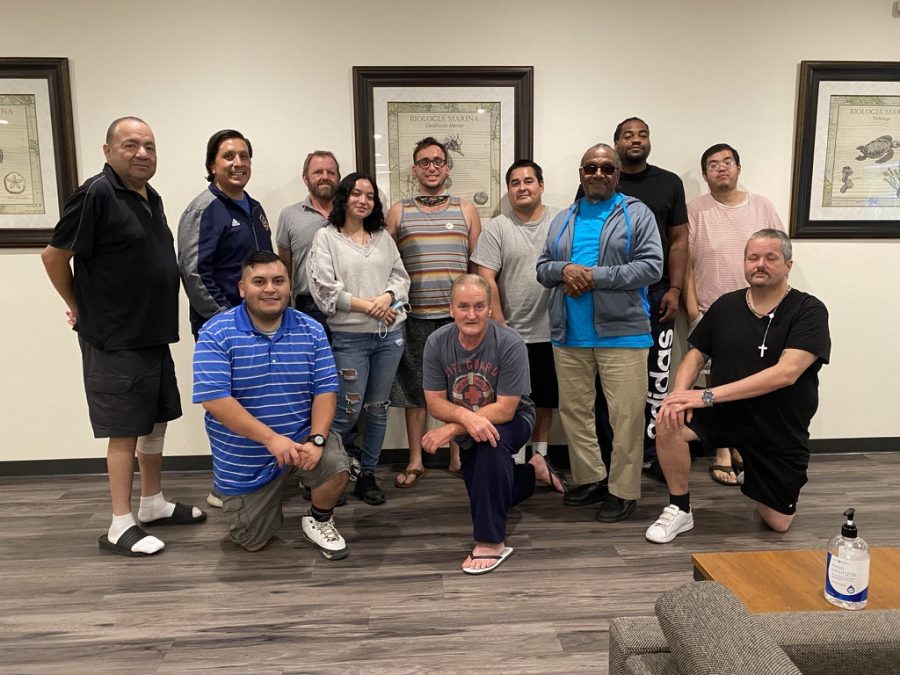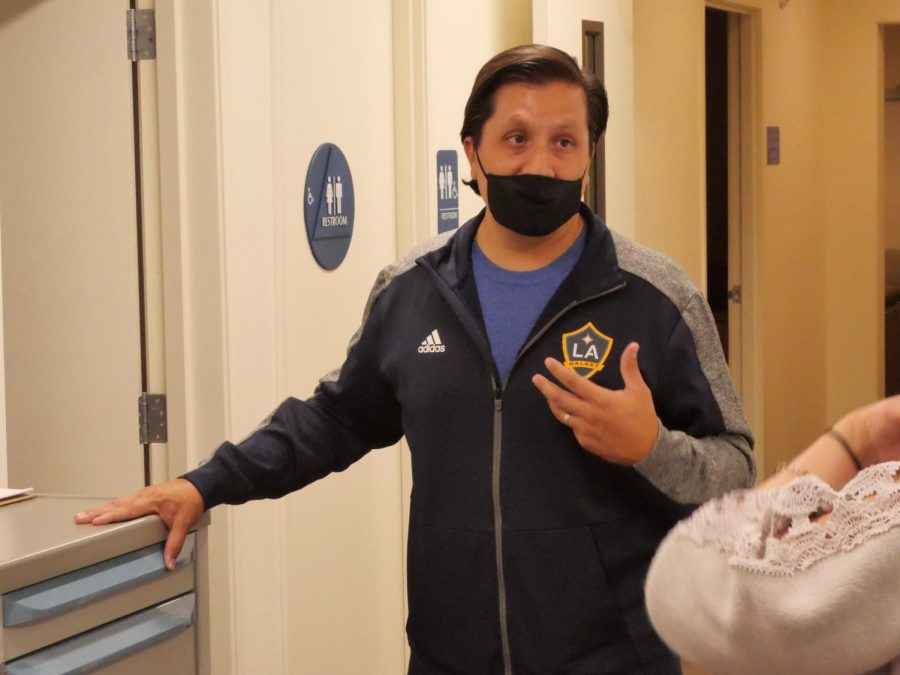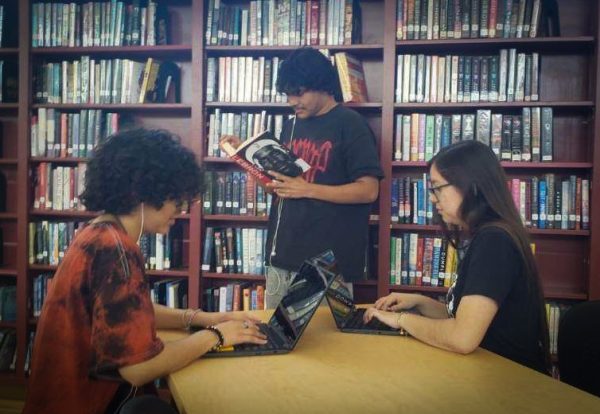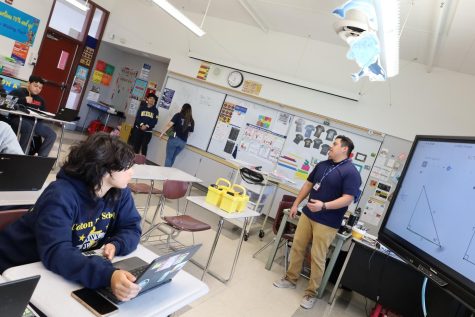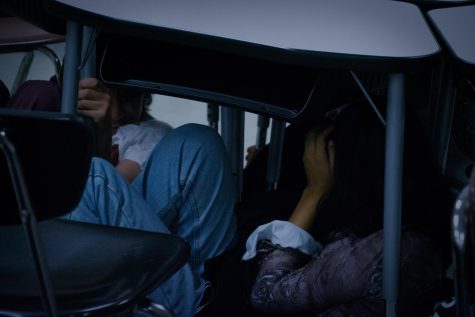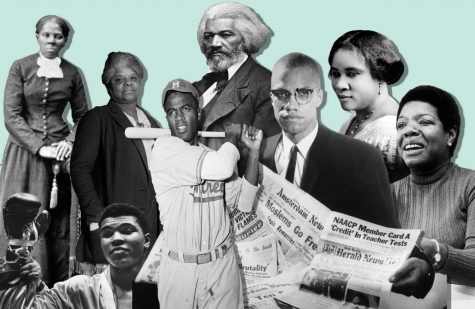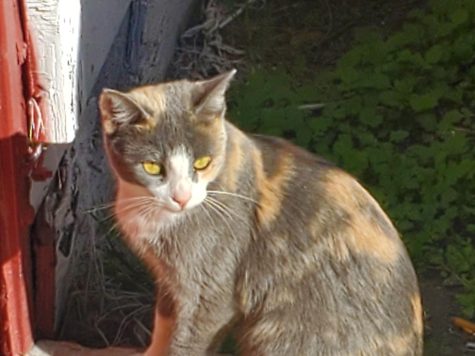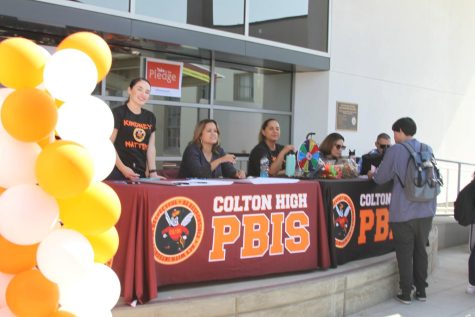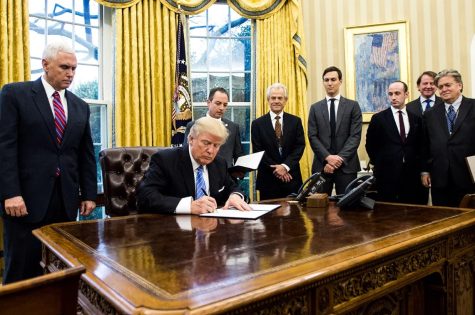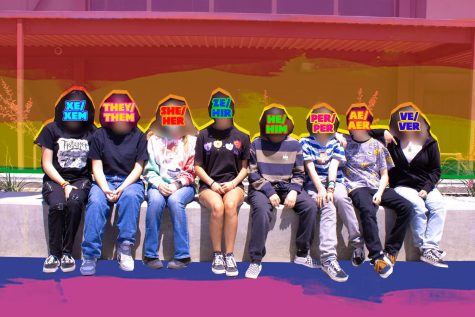Mary’s Mercy Center supports local homeless in San Bernardino
The state of the art facility provides transition services for the unhoused, but is this enough?
Sadie Larios (center), with Dan Flores (second from left) and the men of Mary’s Mercy Center.
On October 4th, 2021, I walked into Mary’s Village for unhoused men. As I talked with Dan Flores, Executive Director of Mary’s Mercy Center, I heard the sound of the men laughing and enjoying the “Monday Night Football” game between the Chargers and Raiders.
Dan put it simply. “We are building a community. It really is a home—we are creating families.”
Mary’s Mercy Center offers resources and help for homeless and low-income individuals to prepare them for self-sustained living.
These resources include shelter and safety, showers, dental care, health care, food, and so much more.
At the start of my tour, Dan greeted me and shared why he decided to leave his position with the county of San Bernardino to become the Executive Director of Mary’s Mercy.
For Dan, homelessness is not just caused by mental illness, addiction, and joblessness. Of course, those are important influences, but the most important factor that decides whether or not someone is homeless is if they have no community.
We are building a community. It really is a home—we are creating families — Dan Flores, Executive Director of Mary's Mercy Center
In their attempt to build this community, Mary’s Mercy has been active serving the unhoused over the past three years. They have served over 226,000 plates of food, provided free medical screenings for over 2,000 individuals, offered showering facilities for thousands, and met the needs of over 1,500 infants by providing diapers, wipes and formula.
Mary’s Mercy Center’s family of programs also include Veronica’s Home for abused and displaced women, Mary’s Table, and Mary’s Village.
The Mary’s Village program for men in transition has a large, privately financed facility in San Bernardino. The campus has four buildings that can house up to 70 men. Residents start their journey in Building 1 and work their way up, earning more privacy and privileges as they move through the program.
In each building, the men have access to a laundry, restrooms, a living room stocked with games and books, a kitchen filled with food, personal lockers, and a bunk in which to sleep.
During the day, the men attend meetings for substance abuse, get classes helping them understand how to apply for jobs and handle interviews, take classes taught by volunteers to help them with their education, and get mental health support from volunteer therapists.
I went to Mary’s Village to see if there was help being offered to our homeless community here in Colton. What I found was something more.
Mary’s Mercy Center also offers hope.
Hope that comes with having food to eat. Hope that comes with having a bed on which to lay your head safely. Hope that comes with easier access to mental and physical care.
Hope for a promising future.
What I saw was an opportunity for these men to feel human again by regaining a community and their dignity.
Mary’s Mercy Center has done a great job providing support for the homeless in San Bernardino.
However, there is still a lack of resources for the homeless here in Colton. If there is any help being offered, it is not enough.
Nationally, California ranks 4th with the size of its homeless population.
An estimated 23.8% of the children in San Bernardino live in poverty. And 41% of the homeless population are families.
There is a community being built for the homeless in San Bernardino, but we are struggling to create one.
But it is never too late.
At the end of the tour, Dan gave me a card and it said one thing that stood out:
“ . . . Go and find out the meaning of mercy.”
Recently, the CHS Publications Department experienced a major theft as over $20,000 in photography equipment was stolen from our studio over Spring Break. This included all cameras. Any amount you donate will help rebuild our program. Thank you!
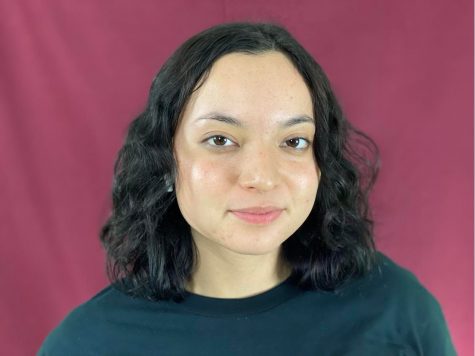
Sadie Larios is a senior at Colton High School set to graduate in 2022. She is an avid movie watcher and music listener. When she is not at...




